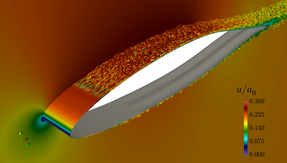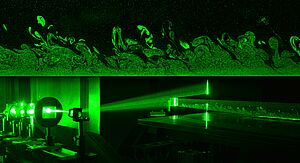Projekt-, Bachelor- und Masterarbeiten




Der Lehrstuhl für Strömungsmechanik bietet innerhalb seiner Forschungsschwerpunkte verschiedene Möglichkeiten für Studierende an den Lehr- und Forschungsaktivitäten teilzunehmen.
Ansprechpartner numerische Arbeiten: Dr.-Ing. M. Meinke
Ansprechparnter experimentelle Arbeiten: Dr.-Ing. M. Klaas
Im Folgenden sind beispielhaft einige experimentelle und numerische Projekt-, Bachelor-, und Masterarbeiten aufgeführt..
Angebotene Projekt-, Bachelor- und Masterarbeiten:
| Thema | num/exp | Download |
|---|---|---|
| Topics in multiphase flow simulations using the Lattice Boltzmann Method | num | Download |
| Synthetic data generator | exp | Download |
| Numerische Analyse partikelbeladener turbulenter Strömungen | num | Download |
| Erweiterung der Lattice-Boltzmann-Methode auf kompressible Strömungen | num | Download |
| Machine learning-based prediction of forces in Lagrangian point-particle approaches | num | Download |
| Machine learning-based modeling of non-equilibrium chemical reaction rates for the computation of hydrogen-air flames | num | Download |
| Numerical analysis of control of shock-wave / boundary layer interaction using air-jet vortex-generator | exp | Download |
| Injection and Turbulent Mixture Formation of Bio-Hybrid Fuels in Internal Combustion Engines | num | Download |
| Active drag reduction in turbulent boundary layer flows subjected to spanwise traveling transversal surface waves using learning-enhanced CFD | num | Download |
| Thermoacoustic Investigations of Hydrogen-Air Flames | num | Download |
| Researching the multiphase flows of the Precise Electrochemical Machining (PECM) process | num | Download |